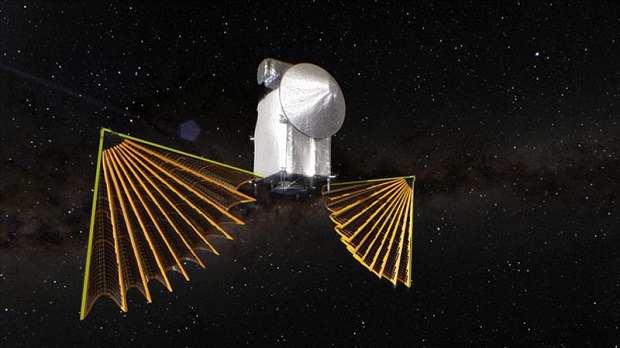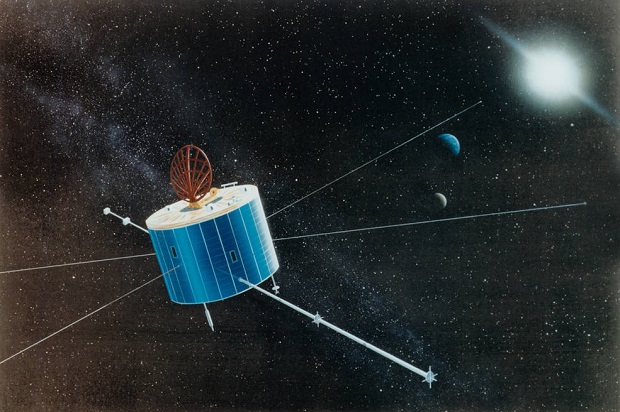
NASA ends Geotail science mission, but Lucy probe's latched panel won't be touched yet
NASA is wrapping up the Geotail science mission, which took 30 years instead of the planned four years. The agency has also decided at least through fall 2024 not to touch the latched solar panel of the Lucy probe whose science mission has not begun yet.
Mission Geotail։ 30 years in space
The Geotail satellite was developed jointly by NASA and the Japan Aerospace Exploration Agency. It was put into orbit by a Delta II rocket on July 24, 1992. Since then the satellite has been orbiting the Earth and collecting data on the structure and dynamics of Earth's protective magnetic field, the magnetosphere.
The joint mission between NASA and the Japan Aerospace Exploration Agency (JAXA) was scheduled to last four years but was extended several times because it provided scientists with quality data that became the basis for thousands of scientific publications.
Now, more than 30 years after the mission began, NASA announces its end because of the failure of the satellite's only functioning data logger. The first satellite data logger failed in 2012, but the second continued to work. It, too, began having problems on June 28, 2022. Several times the specialists tried to fix the device but in vain. As a result, on November 28, 2022, it was decided to stop observing with its help. However, scientists will be at least a few years studying the data already collected through this device.
Astronaut scientist Don Fairfield of NASA's Goddard Space Flight Center in Greenbelt (Maryland, U.S.), said Geotail was a very effective device, and its mission helped learn a lot and better understand the interaction of the solar wind with the Earth's magnetic field.
The data collected by Geotail on physical processes has helped scientists study many processes, including how fast energy and particles flow from the Sun to the Earth. The instrument has also been used to find oxygen, silicon, sodium, and aluminum in the lunar atmosphere.
Scientists working on this mission were also able to find out where the magnetic reconnection process takes place, the main "supplier" of matter and energy from the Sun to the magnetosphere, and one of the initiators of the aurora borealis. It was this discovery that launched the Magnetospheric Multiscale mission, which was launched in 2015.
Lucy and the latched panel
On October 16, 2021, the Lucy probe launched into space had a minor problem: One of its solar panels latched, causing it to fail to fully unfold.
In the meantime, scientists tried to somehow complete the process of fully unfurling the panel in 2022, but in vain. Now the experts have decided not to touch it anymore. The panel is now quite stable, and attempts to influence it in any way could do more harm than good. Anyway, scientists believe that the probe will still be able to work normally.

According to the latest data, the panel is currently at least 98% open, which is enough to generate the energy needed to support the probe's 12-year mission. However, scientists will need to monitor how the solar panel behaves in the coming months, and in the fall of 2024, they will assess the situation and decide whether additional measures are needed and try to complete the process of opening the panel.
The Lucy probe's scientific mission will begin in 2025 and last until at least 2033. During this time, the probe should visit about a dozen asteroids orbiting Jupiter. They are called “archaeological antiquities of the solar system” because they are believed to be older than the planets in our system.
- Related News
- 11 incredible satellite photos have been published on Earth Day
- NASA shows all of Ingenuity's flight trajectories in one video
- Could life exist on Saturn's moon Enceladus?
- Why is it so difficult to send people to the Moon today?
- Once in a lifetime phenomenon: This year we will observe a star explosion that occurred 3,000 years ago
- "AMADEE-24" Mars Analog Research Mission in Armash came to an end
- Most read
month
week
day
- Pavel Durov gives interview to Tucker Carlson: From 3-hour interview, less than hour appears in final version 1384
- Meta unveils Llama 3 and claims it's the "most powerful" open source language model 830
- Once in a lifetime phenomenon: This year we will observe a star explosion that occurred 3,000 years ago 807
- WhatsApp to integrate AI function: What will it do? 771
- Google fires 28 employees who protested against company's cooperation with Israel 766
- Nokia and Heineken introduce Boring Phone: It does not have social networks and a browser, but it is designed for people over 21 (photo) 758
- Boston Dynamics introduces new version of Atlas robot that is completely electric։ Where will it be applied? 731
- iPhone 17 Plus will have smaller screen 698
- 5 best smartphones with IPS screens 679
- How often is it worth replacing a smartphone with a new one? 652
- Read also
- Archive









